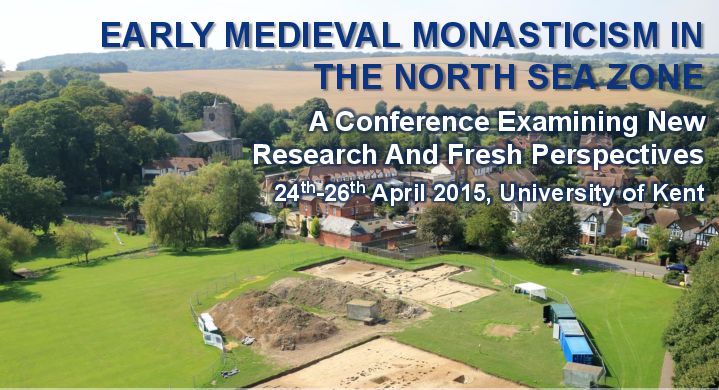CONFERENCE – Early Medieval Monasticism in the North Sea Zone: New Research and Fresh Perspectives
2015 marks the conclusion of a major AHRC-funded campaign of excavation at Lyminge, the first archaeological investigation to provide a detailed account of the origins and development of a royal monastery in the kingdom of Kent. The results shed light on many themes central to the interpretation of early medieval monastic foundations in their contemporary contexts.
The aim of the conference is to contextualise the results of this research by bringing together an international body of scholars to examine the theme of early medieval monasticism in the North Sea Zone from a variety of archaeological, historical and cross-disciplinary perspectives.
Sessions include: ‘Power and Place: the Politics of Monastic Foundation’, ‘What did Monasteries Look Like? Architecture and Layout’, and ‘Production, Consumption and Surplus: Monasteries as Economic Central Places’. The conference will conclude with a round table discussion to identify priorities for future research and opportunities for new scholarly collaboration. There is an optional excursion to Lyminge and other local sites on Friday afternoon followed by a keynote address by Professor John Blair and a wine reception.
Speakers are: Justine Bayley (London), John Blair (Oxford), John-Henry Clay (Durham), Rosemary Cramp (Durham), Rosamond Faith (Oxford), Zoe Knapp (Reading) Elizabeth Lorans (Tours), Mark McKerracher (Oxford), Tomás Ó Carragáin (Cork), David Petts (Durham), Gabor Thomas (Reading), Dries Tys (Brussels), Tony Wilmott (Historic England), Ian Wood (Leeds), Barbara Yorke (Winchester).
Conference registration fee is £42 which includes lunch and refreshments. The optional field trip to Lyminge is £10 per person. Please go to www.lymingearchaeology.org for details and registration. Please contact a.knox@reading.ac.uk with inquiries.
This conference is sponsored by the Arts and Humanities Research Council and project partners Kent Archaeological Society.


